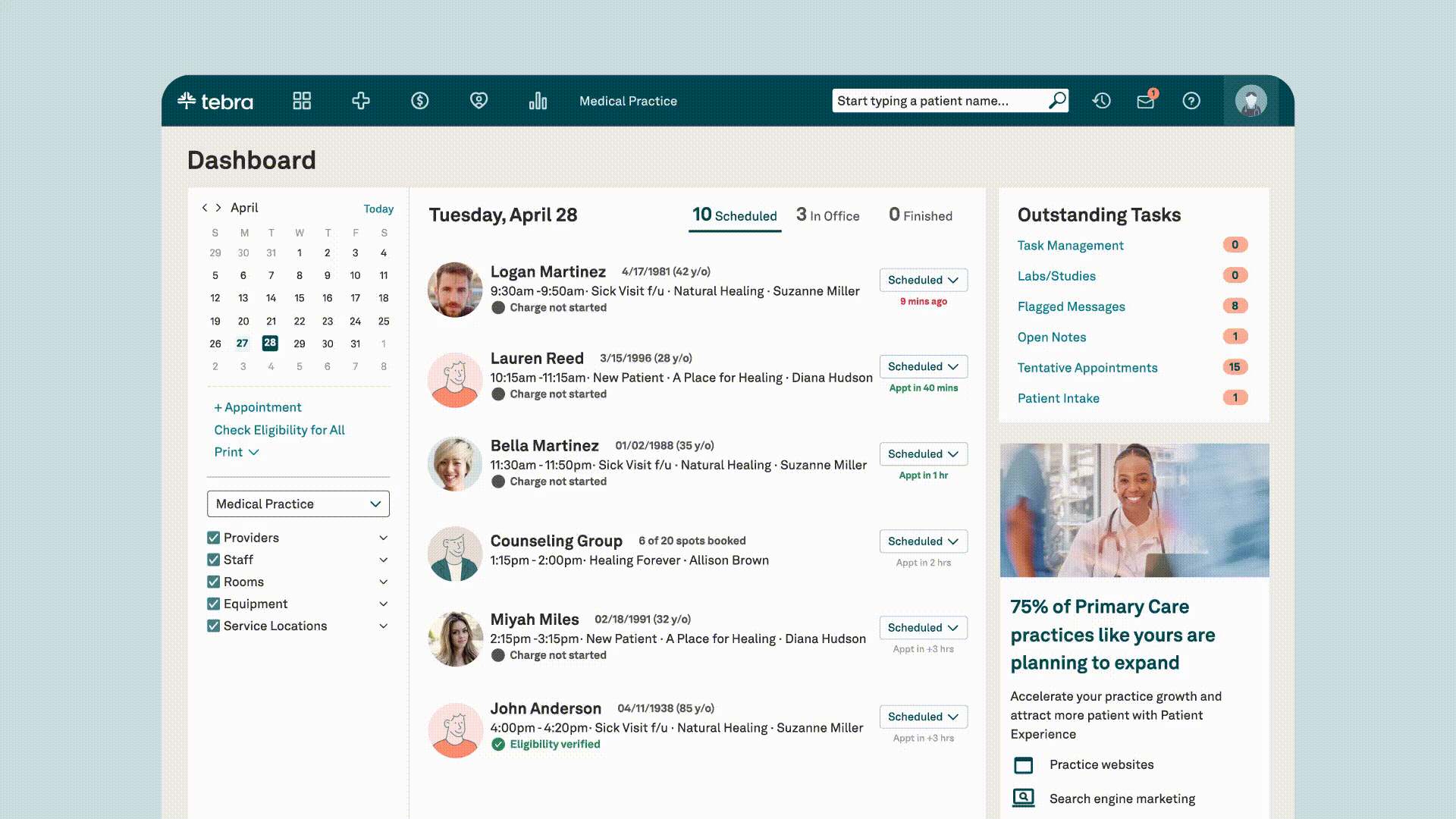How to address EHR alert fatigue
Addressing alert fatigue can lower the risk of adverse patient events, support better care delivery, and relieve clinician burnout.

Key Takeaways
- Excessive EHR alerts can lead to desensitization and missed critical warnings.
- Optimizing alert settings and using AI reduce unnecessary notifications and improve response rates.
- Tracking override rates and refining alerts over time help prevent burnout and enhance safety.
Electronic health record (EHR) systems feature pop-up alerts to deliver critical patient data to clinicians in real-time. These targeted notifications enhance clinical decision-making and improve health outcomes.
However, when providers face excessive alerts, the EHR alert system becomes counterproductive — important messages get overlooked amid the noise, compromising patient safety rather than enhancing it.
This guide addresses EHR alert fatigue and offers practical solutions to optimize alert effectiveness.
Alerts and patient safety
Alerts are intended to reduce preventable errors that can compromise patient safety. For example, a drug allergy alert can stop a provider from prescribing a harmful medication, while an abnormal lab results alert can help ensure timely follow-up on concerning conditions.
What is alert fatigue in healthcare?
Exposing clinicians to a large volume of alerts often leads to “alert fatigue,” a condition that occurs when we see too many pop-up notifications, most of which aren’t relevant. Alert fatigue has been implicated as a significant factor in serious medical errors because it often prevents clinicians from seeing and taking action on critical alerts. Fatigue is also associated with clinician burnout.
“Alert fatigue has been implicated as a significant factor in serious medical errors because it often prevents clinicians from seeing and taking action on critical alerts.”
Fortunately, informing yourself and your staff and addressing alert fatigue can lower the risk of adverse patient events, support better care delivery, and relieve clinician burnout to enhance professional quality of life.
Causes of EHR alert fatigue
There are 3 primary causes of alert fatigue:
1. High alert volume
When an EHR system generates a high volume of alerts it can overwhelm providers, causing them to see the system as a hindrance. A retrospective study published in BMC Medical Informatics and Decision Making in 2017 found that clinicians became less likely to accept alerts as the number of alerts increased.
2. Redundant alerts
The same study also found that in one year, an average of 25% of drug alerts and one-third of clinical reminders for a single patient included duplicate information. Receiving the same information over and over desensitizes clinicians to its relevance.
3. False alarms
Studies show more than two-thirds of all medication-allergy alerts are for non-life-threatening allergies. Data errors or inaccurate information can also trigger false alarms. Frequent false alarms encourage clinicians to distrust the alert system, making them more likely to override critical notifications.
Can CDSS cause alert fatigue?
A clinical decision support system (CDSS or CDS) is a tool that assists providers with medical decision-making. CDS automates clinical alerts intended to supplement the provider's own clinical knowledge and experience. However, CDS configurations may generate numerous irrelevant alerts, contributing to desensitization and alert fatigue.
Identifying alert fatigue in healthcare settings
Identifying alert fatigue is crucial to improve alert management and reduce clinician overwhelm. Recognizing signs and symptoms of alert fatigue allows practices to implement optimization strategies before adverse consequences occur.
Common indicators of fatigue in clinical staff include:
- Delayed response times: Desensitization can cause clinicians to take longer to respond to alerts or fail to act on them entirely.
- Excessive overrides: Frequent overrides indicate that providers generally don't consider alerts valid or helpful, suggesting fatigue and distrust of the system.
- Declining engagement: Clinicians may act withdrawn. They may show less motivation to complete tasks, make more errors, refuse to interact with the EHR, or display increased frustration at work.
- Decreased productivity: When clinicians must constantly pause other tasks to deal with alerts, productivity is impacted and there’s a higher risk of incomplete or delayed care.
- High error rates: Task interruptions, desensitization, and frustration caused by alert fatigue can lead to a higher clinical error rate.
Metrics for measuring alert fatigue
Tracking specific metrics uses data to reveal patterns of alert overload, helping you identify target areas for improvements that reduce desensitization and overwhelm.
The following metrics provide insight into the impact of alerts on your clinical team:
Alert-to-action ratio
An EHR system tracks how clinicians interact with alerts, including which alerts are dismissed or accepted and which result in actions like medication changes, lab orders, or adjustments to the treatment plan. Alert-to-action shows trends such as which alerts are dismissed vs. those that correspond with meaningful actions.
Alert fatigue score
This metric centers on clinician experience when evaluating how alert fatigue affects your practice. Research shows that the perceived level of alert fatigue can significantly impact the quality of clinicians’ professional lives.
To measure perceptions of fatigue, conduct surveys and feedback sessions that ask your staff to rank fatigue levels. Fatigue scores identify which areas urgently need interventions to streamline patient alerts.
Override rates
The frequency of alert overrides reveals how many notifications clinicians deem irrelevant. Use EHR override data to evaluate the alert system's effectiveness and inform plans for customization or upgrades.
Time spent managing alerts
Tracking how much time clinicians spend managing alerts can reveal which workflows are most impacted. Adjusting notifications based on this data helps streamline specific clinical workflows. This process also sheds light on the efficiency and customizability of the current EHR system.

Strategies to mitigate EHR alert fatigue
If you’re concerned that alert fatigue is affecting your clinical team, it’s time to focus on quality improvement. Here are ways you can develop a strategy to assess and address EHR issues that contribute to desensitization.
How do you reduce alert fatigue?
The key to preventing alert fatigue is to minimize the number of non-critical alerts clinicians and other healthcare professionals see daily and simplify information delivery. Establish a governance committee tasked with:
- Designing practice-specific policies
- Conducting routine assessments
- Recommending modifications to improve alert effectiveness
“The key to preventing alert fatigue is to minimize the number of non-critical alerts clinicians and other healthcare professionals see daily and simplify information delivery.”
Consider the following fatigue reduction initiatives:
Regular evaluations
Schedule routine evaluations regarding the impact of alerts on clinical workflows and staff. Take advantage of EHR reports and data analytics highlighting specific patterns on critical metrics.
Feedback channels
Feedback from front-line users is crucial for the practical evaluation of the alert system. Set up monthly reviews with clinical teams to conduct surveys and gather user feedback.
Staff training
Conduct training sessions and ensure staff are educated on patient alert policies and protocols. Also educate them on how to operate the EHR features for setting and modifying notifications.
Optimizing alert systems
EHR systems that allow practices and health systems to configure alert delivery help reduce the risk of alert fatigue for clinical and non-clinical staff.
Recommended actions:
- Filter recipients by relevance and priority
- Tailor alerts by activity, such as appointment scheduling or preparing billing statements
- Configure the system to eliminate redundant alerts
- Compose brief messages with concise information and clear, actionable insights
- Train users on the patient alert system, how to optimize alerts, and best practices for avoiding alert fatigue
Starting the intervention process now could save your practice from adverse events due to increased errors, reduced productivity, and the impact of burnout on care delivery and staff satisfaction.
Leveraging technology and AI
Using a technology-driven approach focuses on making alert systems smarter and more customized. AI algorithms analyze clinical data in real-time, identifying patient risk levels with high accuracy so that alerts are sent only when necessary. These tools also evaluate alert relevancy to automatically suppress non-critical alerts.
Best practices and case studies
Effective strategies for mitigating alert fatigue focus on customization, clinician engagement, and interventions informed by data-driven insights using tailored solutions designed to meet the practice’s specific needs.
Case study: Optimizing advisory alerts with a multi-pronged strategy
In 2015, Jurong Health Campus (JHC), a 700-bed public hospital in Singapore, implemented a new EHR system. The system significantly increased advisory alerts, leading to higher alert dismissal rates.
Challenge
Mitigating alert fatigue required improvements to make alerts more effective and increase clinician action on critical notifications while maintaining the risk reduction benefits of advisory messages.
Strategy
Concerned about alert fatigue and clinician desensitization, JHC initiated a continuous, multi-pronged intervention strategy in 2019.
The primary focuses of this strategy include:
- Refining alerts
- Targeted recipients
- Optimized workflow timing
- Governance and feedback
- Data analysis for alert relevance
Alert refinements were based on feedback, data analysis, and clinical best practices.
Result
After implementing these optimizations, JHC saw an average of 59% reduction in interruptive alerts across all clinical groups. It reduced total interruptive alerts by 74.3%. The system's overall effectiveness improved as clinicians took more action on alerts fired.
Best practice: Use a data-driven approach
A data-driven approach to managing EHR alerts relies on empirical analysis to identify import alerts from non-relevant notifications. Rather than relying on trial-and-error adjustments, this method examines complex data on crucial metrics, helping practices tailor alerts to specific tasks, clinical roles, or patient health history.
Leverage continuous improvement strategies for long-term results
A continuous approach to improving EHR patient alerts ensures your patient alert system maintains and enhances its effectiveness over time. Investing in continuous, collaborative strategies and ongoing clinician engagement produces substantial, long-lasting benefits. This elevates the standard of patient care and the quality of professional life for dedicated team members.
When choosing important health information technology, such as an EHR platform, look for one that supports a seamless integration of patient alerts with practice-specific workflows. To learn more about EHR alert features and how to select the best system for your practice, read our comprehensive EHR selection and implementation guide.
You Might Also Be Interested In
Optimize your independent practice for growth. Get actionable strategies to create a superior patient experience, retain patients, and support your staff while growing your medical practice sustainably and profitably.
- Current Version – Mar 29, 2025Written by: Amantha MayChanges: This article was updated to include the most relevant and up-to-date information available.
Stay Ahead with Expert Healthcare & Billing Insights
Get the latest industry updates, financial tips, and expert strategies — delivered straight to your inbox.

Suggested for you
Stay Ahead with Expert Healthcare & Billing Insights
Get the latest industry updates, financial tips, and expert strategies — delivered straight to your inbox.










